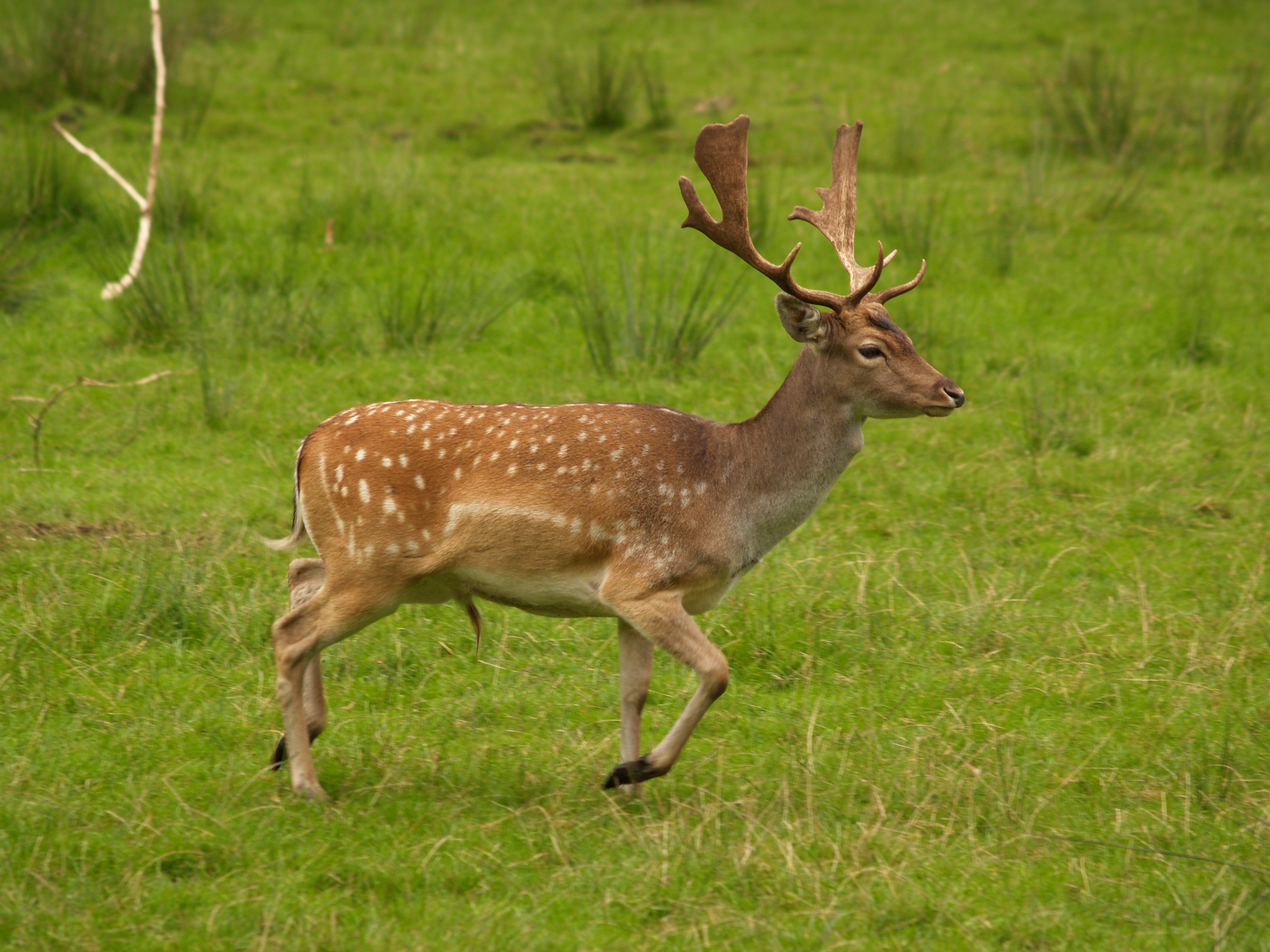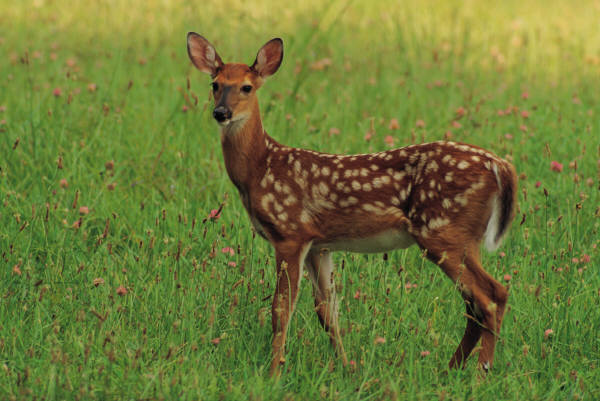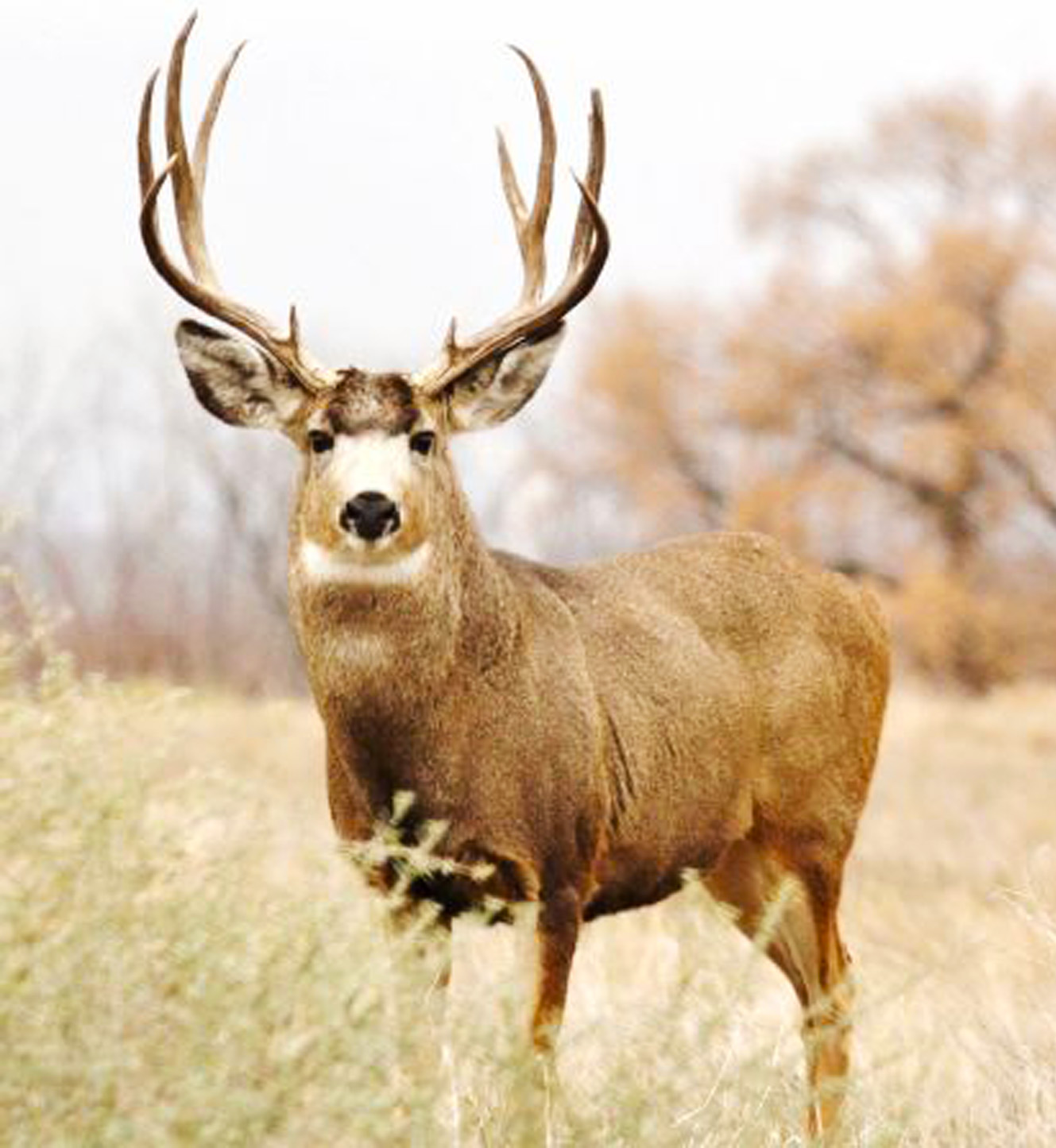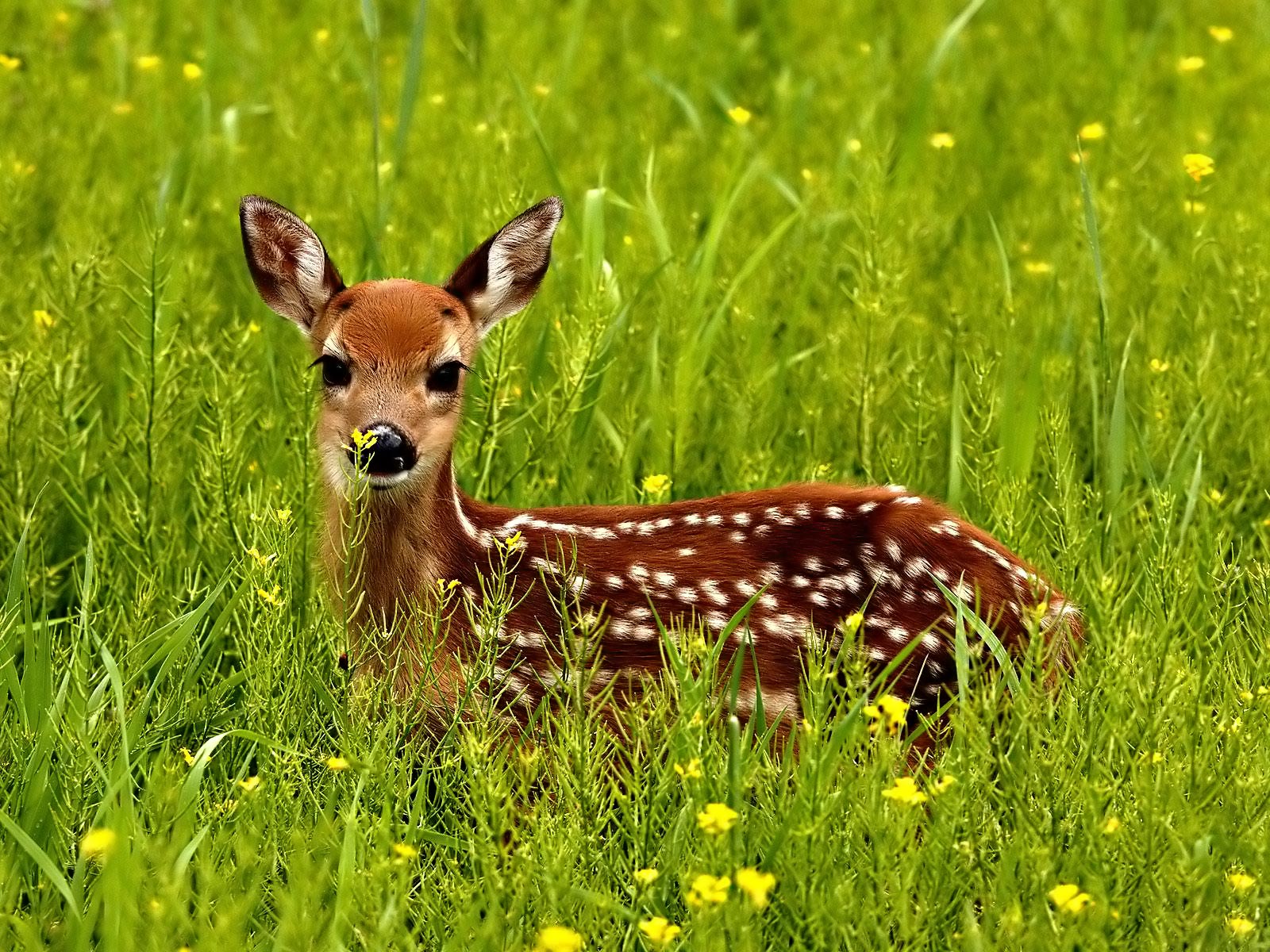
Deer are hoofed, artiodactyl mammals of family
Cervidae. They have bony, branching antlers,
which are shed and regrown annually. The
family contains sixteen genera and approximately
forty species, and inhabits the Americas, Europe,
Asia, and North Africa. Deer live in woods, prairies,
swamps, mountains, and tundra. Common
species are the white-tailed and mule deer in the
United States; wapiti in the United States, Canada,
Europe, and Asia; moose in North America and
Europe; reindeer in Russia, Finland, and Alaska;
and caribou in northern North America.
The four deer subfamilies are the Cervinae
(true deer), Moschinae (musk deer), Muntiacinae
(muntjacs), and Odocoileinae (hollow-toothed
deer). They are hunted worldwide for their meat,
hides, and antlers. Deer meat (venison) tastes
beeflike. Tanned deerhide makes soft leather.
Reindeer, which are domesticated in Scandinavia
and Russia, are sources of meat, leather, and milk,
and serve as draft animals.
Physical Characteristics of Deer
Deer have gray, brown, red, or yellow upper bodies
with lighter colored bellies. Their stiff fur is
smooth looking in the summer and longer and
shaggier in cold weather. Deer shed fur in spring
and fall, a process called molting. They range in
size from seven feet at the shoulder and a ton in
weight for moose, to one foot at the shoulder and a
weight of around twenty pounds for the tiny
pudu. All deer have lithe, compact bodies, short
tails, large, narrow ears, long, slender legs, and
paired hooves on each foot. Their eyes are large,
placed on the sides of the head, and yield a wide
visual range. Deer also have keen senses of smell
and hearing. They run quite quickly to escape
danger.
Males of most species have antlers, as do female
reindeer and caribou. Antlers are solid bone
growths arising from the frontal bone. In moose,
the largest deer, they reach widths of six feet and
weigh nearly fifty pounds. Antlers are shed and
regrown each year, arising from pedicles on the
frontal bone. The pedicles and the growing antlers
are covered with soft skin called velvet. Antlers
grow rapidly. When the antlers have reached their
maximum growth, bone deposition at the antler's
base cuts off the velvet's blood supply. This makes
the velvet dry up, and the itchiness of the dry velvet
leads the deer to rub it off. The shape and complexity
of branched antlers is species dependent.
Antler shedding in late fall is due to bone resorption
at the antler bases. This annoys deer and they
rub their antlers against trees, weakening them
and causing them to come off. Antlers are important
protection for individual deer and their family
groups. Males use antlers to fight other males
and to protect their herds frompredators. The protective
function may explain why, most often, it is
the males who have horns. Horns of females are
much smaller than those of males of a species.
Deer are herbivorous, and their lower molars
have ridges which enable them to grind vegetable
foods. They are ruminants (cud chewers) and
have four-chambered stomachs. Nearly all deer
have facial glands in front of each eye. These make
strongly scented musk, which is used to mark
their territories.
Deer Life
Deer are solitary or live in small to large groups.
Often males and females are solitary except when
mating. Deer are polygamous, with males collecting
harems and battling others for them. Deer can
be gregarious at special times, when they live in
herds ranging from extended families to thousands.
In warm climates deer breed at any time,
while in cold climates they breed from autumn to
winter. Their gestation periods are between five
and eleven months, depending on species. One or
two young are born and are at first hidden, camouflaged
by dappled body markings. Young deer
mate at five to six years old.
All deer eat twigs, leaves, bark, buds of bushes
and saplings, and grasses or other plants. They are
diurnal (active during daylight), and feed most at
twilight. They are also ruminants, who chew and
swallow food several times. Rumination helps
deer get all nutrients and vitamins they can from
their food.
In many countries, especially the United
States, deer have few natural predators. Many of
their predators, such as wolves and mountain
lions, have been driven to endangerment or extinction
as a result of their perceived threat to livestock,
and the deer have benefited by this. If
they become too plentiful, deer overbrowse and
die of starvation during winter. This is managed
through adjusting the hunting season, based on
population estimates made by the U.S. Fish and
Wildlife Service. Deer are one of the few wild animals
that still provide a real contribution to the
diet of humans in some parts of the United States,
where some families rely on a deer or two in the
freezer to provide their meat throughout the
winter.
Deerskin is also used for shoes, boots, and
gloves, and antlers are made into buttons and
other decorative items. Scandinavian and Russian
Lapps and North Asian nomads use reindeer for
food, clothing, and transportation. Caribou, a
reindeer variant, are equally important to North
America's Inuit. Deer were brought to New Zealand
from Europe, and are currently raised on
deer farms. Most commercial venison used in the
United States is imported from New Zealand.
Deer Facts
Classification:
Kingdom: Animalia
Subkingdom: Bilateria
Phylum: Chordata
Subphylum: Vertebrata
Class: Mammalia
Order: Artiodactyla
Family: Cervidae (deer)
Subfamilies: Cervinae (true deer), Moschinae (musk
deer), Muntiacinae (muntjacs), Odocoileinae
(hollow-toothed deer)
Geographical location: The Americas, Europe,
Asia, and North Africa
Habitat: Forests, grasslands, deserts, tundra,
swamps, mountains
Gestational period: Five to ten months
Life span: Eight to twenty years, depending on
species
Special anatomy: Antlers, ruminant stomach
Other popular Animals
Photo Gallery of - Deer








 Animalia Life
Animalia Life